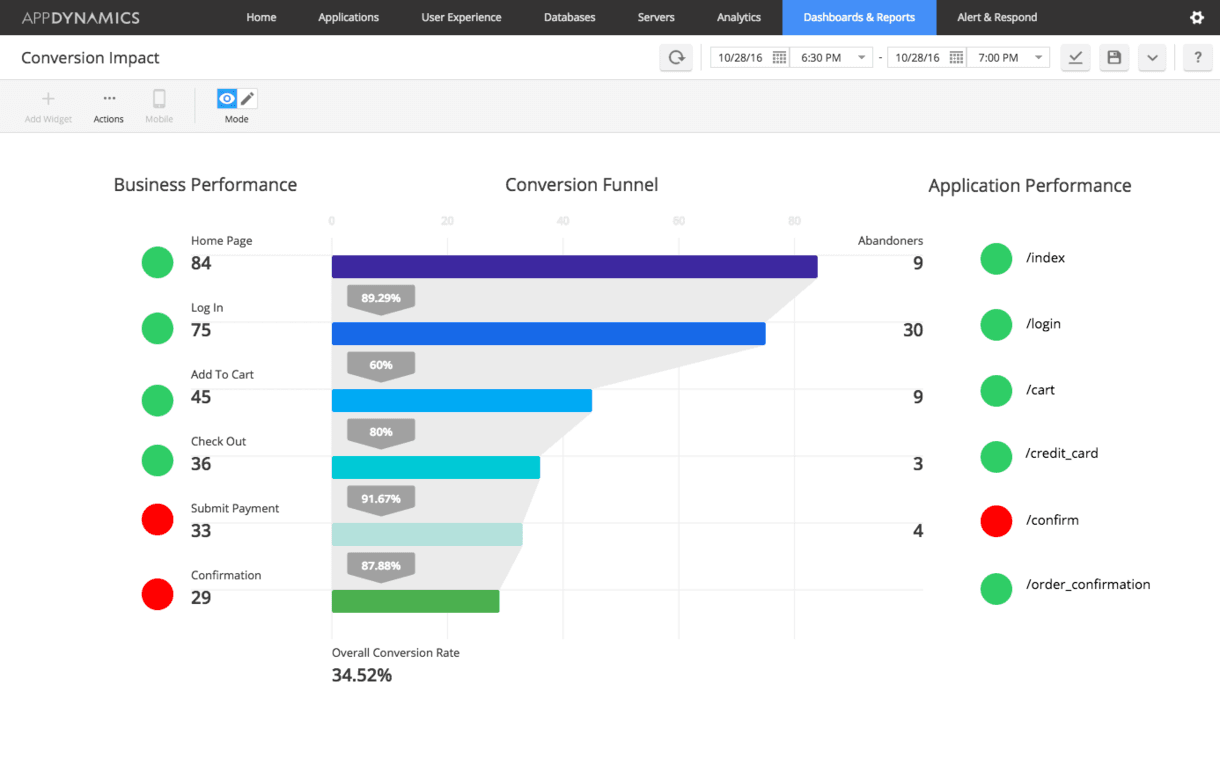With Spring ‘17 Release, AppDynamics Helps Application Teams Ship Faster and More Reliably
With its AppDynamics Spring ‘17 release, the company is setting its sights on aligning the entire business on a single goal -- the ability to continuously delivering high quality mobile and web apps. The latest edition adds a new developer toolkit and major updates to AppDynamics’ Enterprise iQ and Business iQ.

In a digital-first world, where quality and performance are prerequisites for brand loyalty, delivering flawless application experiences is the key to business success. And yet, application teams sometimes struggle to understand the impact of their work on actual customer experience.
With its AppDynamics Spring ‘17 release, the company is setting its sights on aligning the entire business on the single goal of continuously delivering high quality mobile and web applications. The latest edition adds a new developer toolkit and major updates to AppDynamics’ Enterprise iQ and Business iQ.
Bhaskar Sunkara, AppDynamics CTO and head of product at AppDynamics shared the thinking behind the company’s latest feature updates in a statement. “Today, the application is the business, creating immense pressure on organizations to deliver new experiences that ‘wow’ customers. And digital leaders continually raise the bar for what consumers expect from application experiences.”
In a recent blog post, Abelardo Gonzalez, director of product marketing at AppDynamics, explained how many tools and approaches struggle to deliver a streamlined solution.
There have long been silos of information and talent within enterprises as each team works on their part of the big puzzle, building applications to move the business forward. However, the pieces of the puzzle are getting bigger in number with the adoption of microservices and multi-cloud strategies, and more complex to assemble as multiple frameworks and programming languages coexist within an application. In this complex ecosystem, developers, operations, and business teams do their best to align and anticipate what the requirements and interdependencies are, but many enterprises don’t realize the full picture.
Inside AppDynamics Spring ’17 Updates
New in Spring ’17, The AppDynamics Developer Toolkit brings APM (application performance management more directly to the entire software development lifecycle (not just the operations team). This approach lets developers optimize for performance early in their process.
The toolkit spans tools for build, test, analysis and continuous improvement, according to Sunkara. “Every team member can see the impact their work has on the business in real time, and ultimately deliver better applications that create value for the organization,” he said.
Here are some details of how AppDynamics Developer Toolkit works across the lifecycle:
Build: support for new languages and development tools enables application developers to transform ideas into better apps faster.
- Go support: detection and tracing for Go applications.
- Xamarin support: comprehensive support for Xamarin to embed AppDynamics in native iOS and Android mobile applications and monitor and drive application performance.
- Android Studio Plugin: automate the instrumentation process for Android applications.
Integration and test: focus on the user journeys and code that move the needle the most, improving customer outcomes and speeding release velocity.
- Developer mode Business Transactions: deep-code diagnostics for specific Business Transactions in both pre-production and production environments.
- Live mode Business Transactions: faster and more accurate configuration by detecting and defining rules according to live application data.
Automated analysis: new crash analysis tools to spend less time on unplanned work and troubleshooting.
- Smart crash alerts: save time and effort post-instrumentation.
- Unique crashes in Business iQ: crash reports in Business iQ correlate app crashes to business metrics.
Smarter continuous improvement: intelligence into customer journeys so app teams know which updates will matter the most to customers and the business.
- Real user insights: track individual customer sessions while capturing scrolls, taps and other gestures.
- Mobile scorecard: show the metrics that matter, at a glance, including crash rate, number of crashes, network request performance, and error rates for every mobile application.
For operations, AppDynamics also brings more functionality to Enterprise iQ in Spring ’17. “Enterprise iQ takes the complexity out of deploying and managing application performance management solutions,” Sunkara said.
He noted Enterprise iQ provides significant upgrades in these areas:
- License management: New abilities to assign licenses based on business unit. “New license management capabilities streamline administration across enterprises and give the ability to set license quotas and view consumption across the organization.”
- Universal agent: Easier to deploy, upgrade, and maintain agents is made using a single package that can be deployed to any machine that requires monitoring. “The new Universal Agent for Java and Server also allow for ease of deployment and upgrades across large or dynamic environments.”
- Scalability: The new release will “support large deployments with over 100,000 agents.
“Business iQ provides clear, actionable correlations between the quality of customers’ experiences with applications and the eventual impact on the bottom line,” explained Sunkara.
Release Spring ‘17 of AppDynamics enables application teams to build powerful dashboards and establish health rules faster. This new version provides “application teams with more intelligence into how application changes are impacting the business,” Sunkara added. A free trial of AppDynamics is now available.






